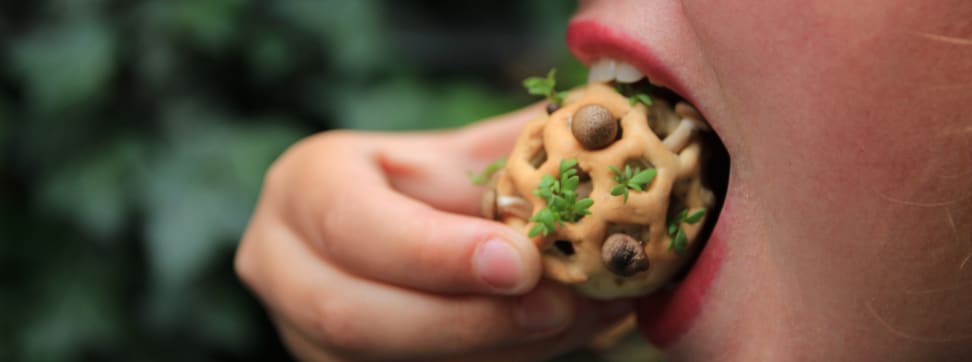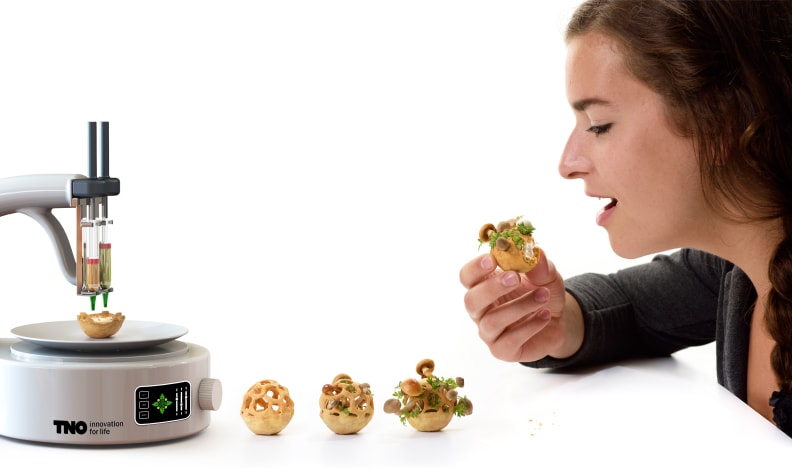Edible Growth: Healthy Snacking From Your 3D Printer
Bringing food and technology together in a nutritious alternative
 Credit:
Chloé Rutzerveld
Credit:
Chloé Rutzerveld
Products are chosen independently by our editors. Purchases made through our links may earn us a commission.
Living snack food! Imagine a healthy hors d’oeuvre, full of seeds and spores, which grows over time with a changing flavor profile. It’s nutritious, excitingly different… and freshly printed?
Dutch designer Chloé Rutzerveld has teamed up with research firm TNO to create the Edible Growth prototype.
The world of 3D printing is full of possibilities, but food printing has generally been focused on relatively simple items like burgers and pasta (not that there’s anything wrong with either of those), as well as less nutritious ingredients like sugar and dough, which can be turned into printable pastes.
Edible Growth is Rutzerveld’s healthier alternative to the pizza and chocolate snowflakes that are being printed by most other machines. Not only is it better for you, it’s also designed to be more sustainable, shortening the food production system by cutting out most packaging, minimizing storage and transportation, and removing all food waste.
Here's how it works: You start with a shell. This can be printed from nuts, dried fruit or vegetables, or gelatinous agar-agar paste. For her original prototypes, Rutzerveld actually used insect flour!
This base is then infused with a variety of microorganisms: Yeast, bacteria, fungi, seeds, and spores are all available for development. These ingredients are all live cultures, in the same vein as what you’d find in good yogurt.
Finally, another layer of crust is added on top to create a unified structure. Holes are left in the upper lid to allow the internal components somewhere to grow. Theoretically, users would be able to alter the design to suit their (visual) tastes.
Now you just leave the snack to germinate for a few days, and then chow down once it smells good to you! The longer the spores and seeds are given to develop, the more pungent the treat will become, sort of like a plant and fungus version of maturing cheese.
{{ photo_gallery name="Edible Growth" }}
For our more technically-oriented readers, Rutzerveld provided us with some more details: “The dough—which will not be dough in the final product—should be printed with a powder bed printer, otherwise the dome will collapse. The inside... can best be printed with FDM techniques. So a new type of printer should contain multiple printing techniques, and the software should be able to locate the organisms at very precise places so they don’t interfere with each other.”
Now, as great as this may sound, don’t start clearing cupboard space just yet. Edible Growth is still very much in the prototype phase. Rutzerveld explains that more time and money need to be invested to fine-tune the printing process, and to make the whole endeavor more practical for consumers.
Instead, she views this project as something designed to “inspire scientists, technologists, designers, and chefs... and it did! It’s an example of one possible way to create healthy food that is natural and sustainable.”
There are many questions yet to answer about the Edible Growth, but one thing’s for certain: Like the world of 3D printing, the possibilities this little ball of deliciousness opens up are nigh endless.

From the printer to your mouth, here are the stages of Edible Growth.
